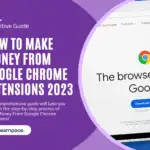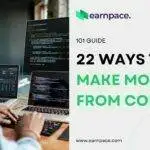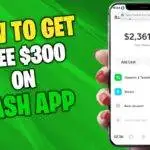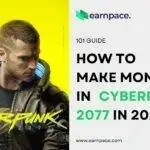Have you ever wondered if you could make money on YouTube by doing something you love even if you’re starting from scratch?
Whether you’re a gamer, vlogger, teacher, or just someone with a smartphone, this guide will show you how. You’ll learn exactly what it takes to turn your channel into a business, and how creators are making over $10,000/month using YouTube’s monetization tools.
We’ll break down everything from AdSense and memberships to affiliate marketing and product sales. Whether you want to go full time or just earn a side income, you’ll discover real strategies that actually work.
By the end of this post, you’ll know exactly how to build, grow, and monetize a successful YouTube channel without needing a huge following or expensive gear.
Key Takeaways
- Multiple Ways to Make Money on YouTube: Learn how to monetize YouTube using ads, memberships, brand deals, digital products, and more.
- Start with Zero Subscribers: See how new creators can earn without uploading original videos or using expensive equipment.
- Real Earning Potential: Discover income ranges like $5 per 1,000 views and $50,000/month from merch.
- Tool Stack for Growth: Use the best YouTube SEO tools and analytics to scale revenue.
- All Monetization Paths Covered: We’ve linked to deep dive posts like YouTube affiliate marketing, YouTube Shorts fund payout, and YouTube live stream monetization to support your journey.
Is it Easy to Make Money On YouTube?
Making money on YouTube is easier than ever but it’s not “easy money.” YouTube gives you over 10 distinct monetization paths, and new creators are getting paid faster thanks to Shorts, Live, and affiliate strategies.
That said, monetizing takes time. Success comes down to consistency, niche selection, and learning what your audience wants. While AdSense income is modest early on, pairing it with affiliate links, merch, or live stream donations can quickly multiply your revenue.
And thanks to tools like Shopify, Sellfy, and Patreon, even smaller channels are pulling in thousands per month without needing millions of views. Platforms like YouTube brand deal platforms also connect mid-sized creators with sponsors in nearly every niche.
If you’re willing to commit and test different strategies, YouTube can absolutely become your biggest income stream.
What do you need to get started?
To start earning, you’ll need a YouTube channel, a Google AdSense account, and consistent content in a specific niche. You don’t need fancy gear just a decent mic and camera (or phone). Tools like TubeBuddy and Canva help optimize thumbnails and video titles.
Before applying to the YouTube Partner Program 2025, you’ll need:
- 1,000 subscribers
- 4,000 watch hours (or 10M Shorts views in 90 days)
- No community strikes or violations
How much money you can make on YouTube?
Earnings vary widely. Ad revenue ranges from $1–$5 per 1,000 views depending on niche and location. Affiliates and merch can earn more some creators make $5,000+ a month from affiliate links alone.
Example: Creator Justin Moore makes over $100,000/year from brand sponsorships with only 100K subscribers. Another, Sarah Lavender, earns $8,000/month selling courses and digital planners to her 40K followers.
Channels combining multiple revenue streams ads + merch + affiliate + crowdfunding often earn the most.
1. YouTube AdSense (Ads Revenue)
YouTube AdSense is the most well known way to make money on YouTube, but it’s also one of the lowest paying if used alone. AdSense earnings come from the ads YouTube shows before or during your videos. Your income depends on views, CPM (cost per thousand impressions), and viewer location.
While average CPMs are $1–$5, niches like finance or software can reach up to $15. But you’ll need a lot of views to earn significantly. That’s why smart creators use AdSense alongside affiliate links, merch, or digital sales.
It’s a great way to start monetizing passively once you join the YouTube Partner Program 2025, but you shouldn’t rely on it alone.
Requirements: 1,000 subscribers + 4,000 watch hours or 10M Shorts views in 90 days. Must join the Partner Program.
How to Set Up YouTube AdSense?
- Create a YouTube channel and verify it with a phone number.
- Upload at least 3–5 original videos consistently in a niche.
- Apply for the YouTube Partner Program via YouTube Studio.
- Connect your Google AdSense account to YouTube.
- Once approved, enable monetization per video in the backend.
- Select ad formats (skippable, display, mid-roll, etc.).
- Track RPM and CPM via YouTube Analytics.
- Adjust content strategy based on top-earning videos.
Quick Tip: Use YouTube revenue analytics to see which videos generate the highest CPM and scale similar topics.
2. Affiliate Marketing on YouTube
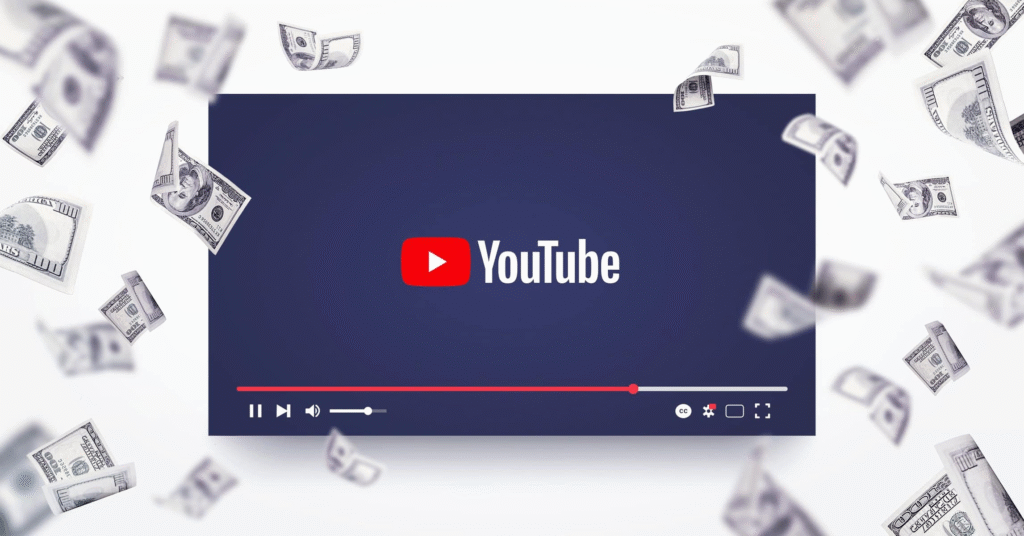
Affiliate marketing is one of the highest margin ways to make money on YouTube. You promote a product, and when someone buys through your link, you earn a commission.
You don’t need to create products or handle customer service. Just weave natural product mentions into your tutorials, reviews, or lifestyle content.
Creators in tech, finance, fashion, and home decor often earn $500 to $5,000/month with this alone.
Requirements: Join affiliate programs (Amazon Associates, Impact, ShareASale, etc.)
How to Do Affiliate Marketing on YouTube?
- Choose a niche with high paying affiliate products.
- Sign up for programs like Amazon, ClickBank, or TubeBuddy.
- Create honest reviews, comparisons, or tutorials.
- Include affiliate links in your video description.
- Use UTM tracking to monitor link performance.
- Disclose affiliate partnerships legally.
- Optimize SEO to rank for produc related searches.
- Test different thumbnails and CTAs for click throughs.
Quick Tip: Read more about YouTube affiliate marketing to learn how top creators structure their offers.
3. YouTube Channel Memberships
Channel memberships allow you to offer exclusive perks like behind the scenes content, early access, or emojis in exchange for monthly payments. Think of it as a mini Patreon built into YouTube.
This is a great income stream for creators with loyal fans even a small group of 100 paying members at $5/month equals $500 in passive income. Memberships also strengthen community connection.
They work especially well for creators in gaming, education, or commentary niches where deeper engagement matters.
Requirements: You must be monetized (in YPP), have 1,000 subscribers, and be over 18.
How to Set Up YouTube Channel Memberships?
- Join the YouTube Partner Program and enable monetization.
- Go to YouTube Studio → Monetization → Memberships.
- Create 1–5 tiered membership levels ($0.99–$49.99).
- Add value to each tier (early videos, Discord access, members-only lives).
- Create a compelling promo video and channel badge.
- Promote membership via video intros and community posts.
- Deliver consistent exclusive content weekly or monthly.
- Track member growth and perks redemption in Analytics.
Quick Tip: Combine memberships with YouTube channel memberships strategies to increase monthly recurring revenue.
4. Super Chat and Super Stickers
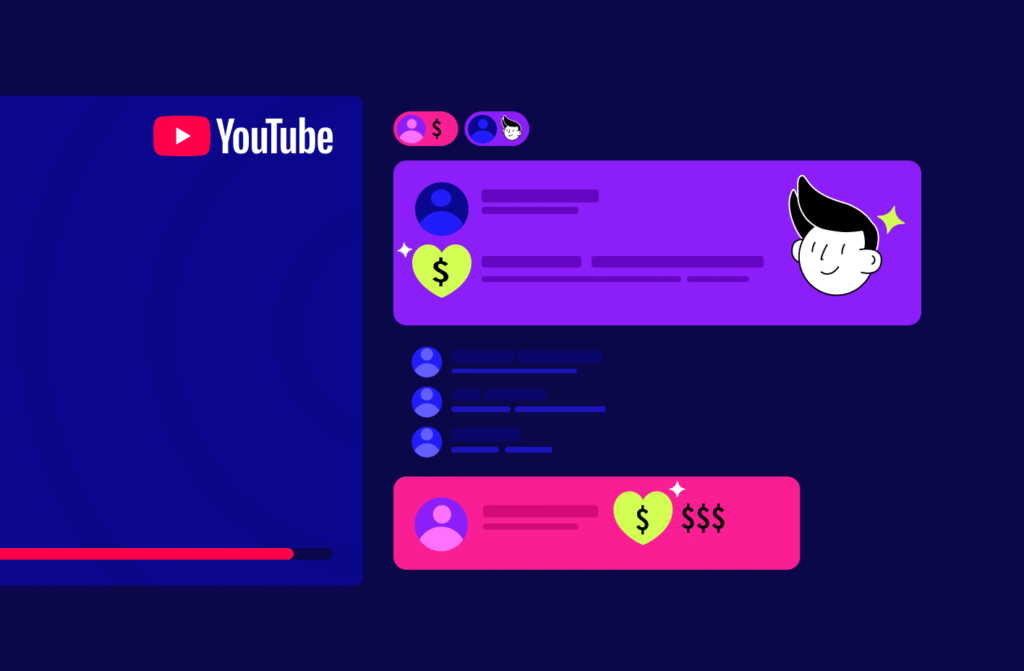
Super Chat and Super Stickers let fans pay to highlight their messages during live streams or premieres. This makes live Q&As and livestreams extremely profitable for creators with active audiences.
YouTubers often earn hundreds to thousands per stream this way, especially during launch events, fundraisers, or game nights. Super Chat thrives when your audience is engaged and wants to be noticed.
Requirements: Must be YPP-approved and live in an eligible country.
How to Use Super Chat?
- Enable Super Chat from Monetization settings.
- Schedule a live stream and promote it ahead of time.
- Ask questions or do polls to encourage engagement.
- Mention and thank each Super Chat contributor live.
- Offer fun incentives (name shout-outs, jokes, dares).
- Use tools like Streamlabs to display donations on screen.
- Highlight top contributors in a pinned comment or future video.
- Review contributions in Analytics post-stream.
Quick Tip: Use monetize YouTube Super Chat as part of your live content calendar strategy.
5. YouTube Shorts Fund & Ad Revenue
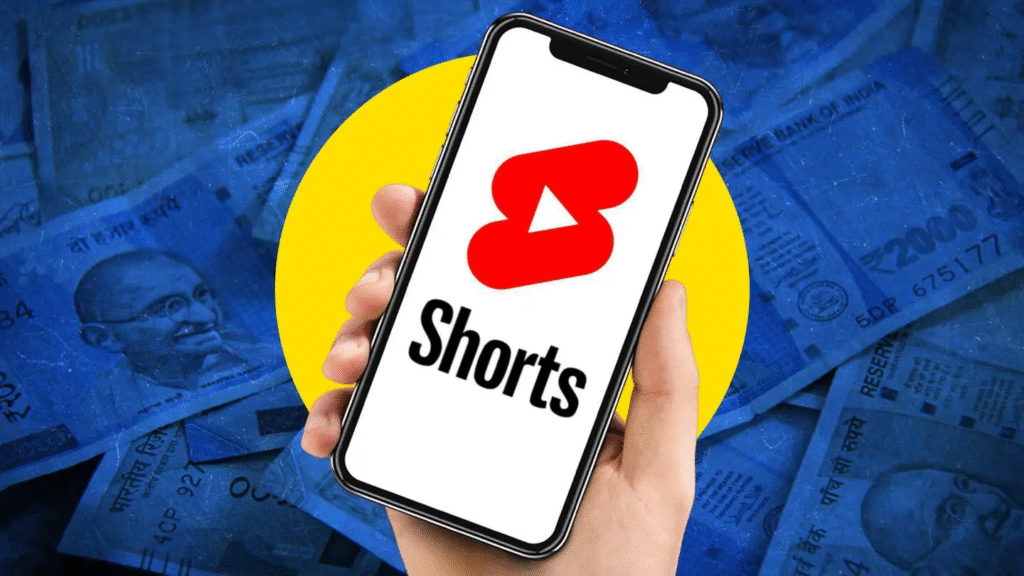
YouTube now pays creators for Shorts via both the YouTube Shorts Fund and ad revenue sharing. This opens doors for creators with limited time or gear.
Shorts are quick, vertical videos under 60 seconds, perfect for discoverability. If a Short goes viral, it could earn $100–$10,000/month even with zero subscribers.
It’s also the fastest way to hit Partner Program requirements through 10M Shorts views in 90 days.
Requirements: Must have original Shorts content, 1,000 subscribers, and Shorts engagement.
How to Earn with YouTube Shorts?
- Post 1–3 high-quality, engaging Shorts per day.
- Use trending sounds, filters, and hashtags.
- Add attention-grabbing text in the first 3 seconds.
- Focus on value (tips, humor, reactions, mini tutorials).
- Encourage likes, shares, and subscribers in the caption.
- Review analytics and double down on top performers.
- Link viewers to long-form videos or your channel homepage.
- Activate ad revenue sharing for Shorts from settings.
Quick Tip: Learn about monetize YouTube Shorts 2025 to unlock consistent income from viral YouTube Short clips.
6. Brand Sponsorships

Brand sponsorships can easily become your biggest income source. You get paid by companies to promote products through dedicated videos, shout-outs, or product integrations.
A creator with 10K–100K subs can earn $500 to $10,000+ per video, depending on niche and engagement.
Success here depends on trust, authenticity, and having a clear audience demographic.
Requirements: No formal minimum, but 5K+ engaged subscribers is preferred.
How to Get Brand Sponsorships?
- Define your niche and create a strong “creator pitch deck.”
- Join influencer platforms like ChannelPages, YouTube brand deal platforms, or directly pitch to brands.
- Negotiate flat rates, affiliate bonuses, or hybrid deals.
- Keep sponsored content authentic and valuable.
- Add disclaimers and avoid “over-selling.”
- Show brands post campaign stats like views and click throughs.
- Follow up to build long term partnerships.
- Diversify sponsor types (apps, physical goods, services).
Quick Tip: Learn YouTube brand sponsorships strategies to secure higher-paying, long-term deals.
7. Selling Merchandise
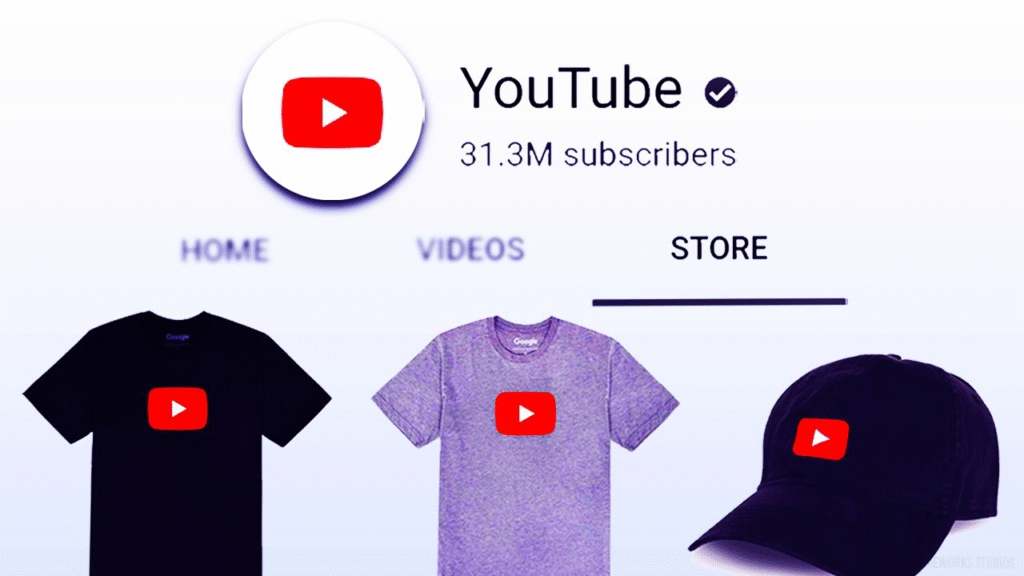
Selling branded merch is perfect for creators with loyal fans. From hoodies to mugs to stickers, you can launch a store without inventory through platforms like Teespring or Shopify.
Some creators make $1,000–$50,000/month by selling merch tied to memes, slogans, or catchphrases.
Requirements: Must have YPP + channel merch shelf enabled for on-channel store.
How to Sell YouTube Merchandise?
- Brainstorm product ideas based on your content or inside jokes.
- Set up a free Teespring or Shopify store.
- Connect your store to YouTube via the Merch Shelf.
- Design items with Canva or hire on Fiverr.
- Launch your merch with a fun promotional video.
- Add product links to descriptions and end screens.
- Offer limited edition drops to boost urgency.
- Review store performance in Shopify/Teespring analytics.
Quick Tip: Master YouTube merchandise setup to create a seamless buying experience from your channel.
8. Selling Digital Products
Digital products like templates, guides, ebooks, or online courses offer huge profit margins because there’s no inventory. Sellfy, Gumroad, or Thinkific help you launch in minutes.
Many creators earn $2,000–$20,000/month by linking digital products in video descriptions or pinned comments.
It works great for niches like productivity, design, coaching, and education.
Requirements: None, but you’ll need landing pages and delivery systems.
How to Sell Digital Products on YouTube?
- Identify your niche’s pain point (e.g., budget tracker, photo preset, resume template).
- Build the product using Canva, Notion, or PDF tools.
- Upload to Sellfy, Gumroad, or your own site.
- Create value driven content around your product.
- Promote with CTAs like “link in description.”
- Use reviews or case studies in videos.
- Run limited time promos to boost urgency.
- Monitor sales and upsell to premium versions.
Quick Tip: Use YouTube digital product sales content to build authority before launching your item.
More Best Ways to Make Money on YouTube
9. YouTube Premium Revenue
When YouTube Premium users watch your videos, you earn a portion of their subscription fee based on watch time. While not a primary income stream, it’s a great bonus source of passive revenue especially for creators with long form content and playlists.
It works automatically once you’re part of the YouTube Partner Program. Premium views often come with higher per view earnings compared to standard ads. This is ideal for creators in niches like education, commentary, and vlogs where people binge watch.
Quick Tip: Learn YouTube Premium earnings data in Analytics to see what formats retain Premium users longer.
10. Live Streaming Monetization
Live streaming unlocks multiple income streams at once Super Chat, ad revenue, affiliate links, and even merch shout outs. It’s a highly engaging format that builds strong audience relationships.
Creators often use livestreams for product launches, live tutorials, game nights, or Q&A sessions. The key is to promote the stream early, stay interactive, and offer incentives (like giveaways). Many mid sized YouTubers earn $100–$2,000 per stream this way.
Quick Tip: Explore monetize YouTube Live 2025 to increase both watch time and revenue through real-time engagement.
11. YouTube Automation (Faceless Channels)
YouTube automation means creating content without showing your face using stock clips, voiceovers, and tools like AI scriptwriters and video editors. Popular niches include luxury, motivation, news, and listicles.
These channels can scale fast and be outsourced entirely. With the right niche, thumbnails, and consistency, you can earn via AdSense and affiliate links without ever appearing on camera.
Quick Tip: Use beginner YouTube monetization tips to grow your first faceless channel faster.
12. Crowdfunding with Patreon and Donations
Platforms like Patreon, Buy Me a Coffee, and Ko-fi allow fans to support you with recurring or one time donations. Creators offer perks like bonus videos, early access, or behind the scenes updates.
It’s great for niche creators, educators, or artists with a passionate fanbase. Many earn $200–$2,000/month from just 50–100 supporters.
Quick Tip: Learn how to unlock YouTube crowdfunding options and offer tiered value to your biggest fans.
13. Licensing Your Content
If you create original videos especially viral or highly visual ones news outlets and media companies may pay to license your footage. Platforms like Jukin Media or ViralHog facilitate these deals.
You could earn $100–$10,000 per clip, especially for trending or timely content. Just make sure to retain content rights and distribute via trusted licensing networks.
Quick Tip: Include your licensing contact info in video descriptions for media buyers to reach you directly.
Step by Step Guide to Make Money on YouTube
Step 1: Create and Verify Your YouTube Channel
Start by setting up a YouTube account and creating a channel. Choose a memorable name that fits your niche. Add a compelling channel description, banner, and profile image. Don’t forget to verify your account by phone to unlock essential features like custom thumbnails and longer uploads.
Step 2: Pick a Niche That Pays
Choosing the right niche is critical for both growth and monetization. Niches like personal finance, software reviews, and online education tend to have higher CPMs. Focus on what you know, love, or are willing to research deeply. Consistency in topic helps the algorithm and builds viewer trust.
Step 3: Plan a Content Schedule and Upload Consistently
Publishing videos consistently builds audience loyalty and trains the YouTube algorithm. Use tools like Trello, Notion, or dedicated YouTube content scheduling tools to map out 30–60 days of content. Aim to post at least once a week, but daily Shorts or Lives can accelerate growth.
Step 4: Optimize Every Video for Search and Clicks
Use keyword research tools to find searchable topics and include your focus keyword in the title, description, and tags. Strong thumbnails and compelling titles increase click through rates. Leverage YouTube SEO 2025 best practices to improve visibility and boost ad revenue potential.
Step 5: Hit Monetization Requirements and Apply to YPP
To unlock YouTube monetization, you’ll need 1,000 subscribers and 4,000 watch hours (or 10M Shorts views in 90 days). Once you qualify, apply for the YouTube Partner Program 2025 via YouTube Studio. Link your AdSense account and wait for approval.
Step 6: Diversify Monetization Streams Early
Don’t wait on AdSense alone. Begin using affiliate links in your descriptions, promote merch, or launch a digital product. Set up affiliate marketing on YouTube by reviewing products you already use. The earlier you layer multiple income sources, the faster you’ll grow your earnings.
Step 7: Engage with Your Community and Build Loyalty
Respond to comments, ask questions in your videos, and use polls or community posts to involve your audience. Consider launching memberships or going live weekly to deepen engagement. Use grow YouTube subscribers fast strategies like end screen promos and pinned comments.
Steo 8: Track Performance and Optimize with Analytics
Use YouTube Studio to review metrics like watch time, RPM, and click-through rate. Identify which videos are performing well and double down on similar topics. Combine insights from YouTube revenue analytics to optimize what actually drives money not just views.
Tips to Increase Revenue on YouTube
Monetization is about more than just uploading videos it’s about maximizing every viewer interaction. To boost earnings, start by diversifying your income: combine ads, affiliate links, Super Chat, and product sales in every piece of content.
Optimize video placement. Ads perform better mid roll on longer videos, while affiliate links work best when paired with reviews or tutorials. Promote merch and digital products in pinned comments and at the start of videos not just the end.
Lastly, improve watch time. The more time people spend on your content, the more YouTube promotes it, increasing ad exposure. Use strong hooks in the first 10 seconds and deliver consistent value throughout.
Quick Tip: Use YouTube watch time tips 2025 to keep viewers engaged longer and boost algorithm visibility.
Best AI Tools for Making Money on YouTube
AI can now handle time consuming parts of content creation from ideation to editing saving you hours each week. Use ChatGPT for scripting, Pictory or InVideo for auto-generating video content, and Descript for fast voiceovers and editing.
For thumbnails and channel art, Canva Pro or Adobe Firefly generate professional visuals in minutes. Want keyword help? TubeBuddy and VidIQ offer AI-backed suggestions to optimize your metadata, boosting video reach.
The best creators combine AI tools with creativity to 10x their content output, especially in competitive niches. Automation also helps with faceless YouTube automation channels, where volume is key.
Quick Tip: Leverage tools mentioned in your YouTube video equipment guide to reduce overhead and scale faster.
Best Affiliate Platforms for YouTube Creators
Not all affiliate programs are created equal. Amazon Associates is a great starting point, but niche specific platforms like ShareASale, Impact, or ClickBank offer much higher commissions sometimes up to 50%.
Look for products that align with your audience’s needs. Tech YouTubers should promote gadgets or software. Health channels do well with wellness gear or courses. Always use affiliate disclosures and track clicks using UTM parameters.
Building trust is key. The more honest and helpful your recommendations, the higher your conversion rate. And don’t forget to test different placements some creators see 3x better results from pinned comments vs. video descriptions.
Quick Tip: Learn from top creators by following YouTube affiliate marketing case studies and split-test your CTAs.
Best Marketing Tools for Monetizing on YouTube
Growing a YouTube business requires more than uploads you need solid marketing. Email platforms like ConvertKit help you build a subscriber list for direct sales. Use Linktree or Beacons to organize multiple monetization links in one bio.
To drive external traffic, use Buffer or Hootsuite for social scheduling. Promote new uploads across TikTok, Instagram Reels, and Pinterest. Paid tools like SEMrush or Ahrefs also help discover high-CPC keywords that drive better AdSense income.
Video SEO remains a cornerstone. Use TubeBuddy or VidIQ to boost organic reach with intelligent tagging, topic clustering, and competitor tracking.
Quick Tip: Explore insights from YouTube algorithm hacks 2025 to enhance reach and viewer retention.
Conclusion
Making money on YouTube in 2025 isn’t just a dream it’s a system. From ads and memberships to affiliate income and digital products, the path is diverse and scalable. With a smart niche, consistent uploads, and multi stream monetization, creators are earning $5,000–$50,000/month even without going viral. Use the tools, apply the strategies, and start building your revenue engine today.
Frequently Asked Questions (FAQs)
How long does it take to start making money on YouTube?
It usually takes 3–6 months to meet YouTube Partner Program requirements (1,000 subs + 4,000 hours). But affiliate marketing and digital product sales can start earning you money earlier.
Do I need fancy equipment to succeed?
No. A good smartphone and basic mic are enough to get started. Many creators use budget-friendly setups. Check out tips in the YouTube video equipment guide to upgrade when ready.
Can I monetize without uploading original videos?
Yes, through faceless automation or content curation channels. Just ensure your content is either transformative or properly licensed. See our post on make money on YouTube without uploading.
What type of content earns the most ad revenue?
Finance, software, education, and tech usually offer the highest CPMs. Focus on valuable content that keeps viewers watching. Combine with optimize YouTube AdSense revenue techniques for best results.
How do I find brand deals as a small channel?
Use micro-influencer platforms like AspireIQ, ChannelPages, or reach out directly to brands. Learn more in our YouTube brand collaboration blog.
Is it possible to make passive income on YouTube?
Yes. Many creators earn from old videos daily through ads, affiliate links, or digital product sales. Focus on evergreen content to maximize this.
What are the best ways to grow fast as a new creator?
Post Shorts daily, optimize SEO, and promote across platforms. Use tips from grow YouTube subscribers fast to build traction quickly.
What’s the most profitable monetization method?
It varies, but most successful creators combine at least three: ads, affiliate links, and their own products or memberships. Those who sell digital goods often report the highest profit margins.
